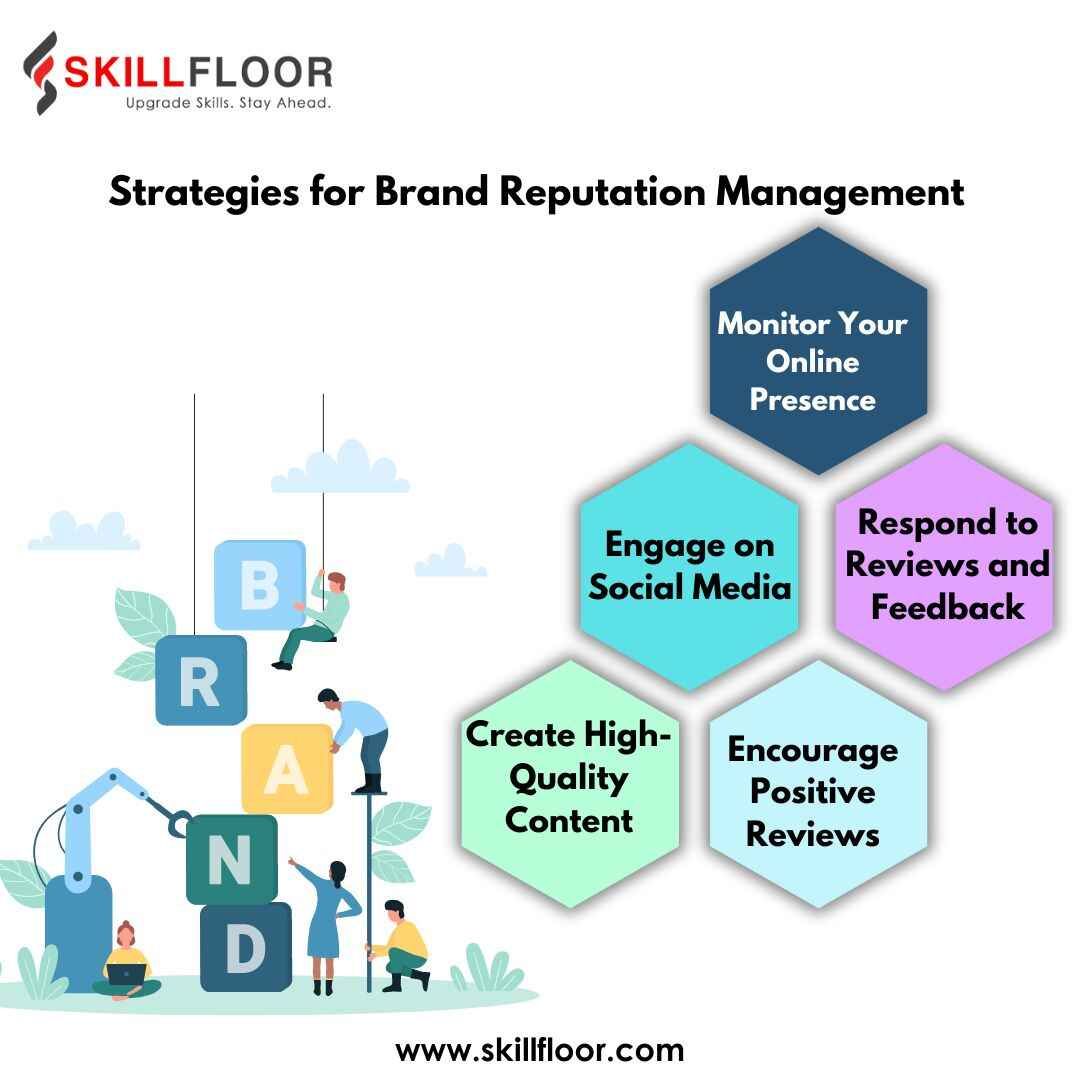Strategies for Brand Reputation Management
Discover effective strategies for brand reputation management. Protect your brand online and build trust with customers through proactive approaches.

As a digital marketer, I understand just how brand reputation management is in shaping the success of any business. In a current highly connected world, where online reviews, social media comments, and public perception can shift rapidly, maintaining a positive brand image is essential. Brand reputation management isn't just about addressing negative feedback, it's about building trust, nurturing relationships with your audience, and actively shaping how your brand is perceived across digital platforms.
I’ll share some key strategies that I use as a digital marketer to help brands protect, enhance, and manage their online reputation effectively. Whether you're aiming to safeguard your brand from potential crises or simply want to strengthen your brand presence, these techniques will help you navigate the challenges of digital reputation management.
Why Brand Reputation Management Matters
Brand Reputation may be both an asset and an obstacle. Customers can quickly gather information and share their experiences with a large audience in seconds. This makes Brand Reputation Management important Here's why this matters:
-
Customer Trust: A positive reputation builds trust and encourages customers to choose your brand over competitors.
-
Customer Retention: Satisfied customers are likely to stick around and become repeat buyers.
-
Competitive Advantage: A strong reputation can set you apart in a crowded market.
-
Crisis Management: Effective reputation management helps you handle negative feedback or crises swiftly and effectively.
Strategies for Brand Reputation Management
1. Monitor Your Online Presence
The first step in Brand Reputation Management is knowing what people are saying about your brand. Use tools like Google Alerts, Social Mention, or Hootsuite to track mentions of your brand across various platforms. Regular monitoring helps you stay informed and respond promptly to both positive and negative feedback.
2. Respond to Reviews and Feedback
Engaging with your customers shows that you value their opinions. Whether it's a glowing review or a critical comment, always respond professionally and courteously. Acknowledge positive feedback with gratitude and address negative feedback with a willingness to resolve issues. This proactive approach can turn unhappy customers into loyal advocates.
3. Encourage Positive Reviews
Happy customers are often willing to share their experiences but may need a little nudge. Encourage satisfied customers to leave positive reviews on platforms like Google, Yelp, or industry-specific review sites. You can do this through follow-up emails, Social Media Marketing, or even in-store prompts.
4. Create High-Quality Content
Content is king when it comes to Brand Reputation Management. Regularly publish high-quality, relevant content that showcases your expertise and adds value to your audience. This could be blog posts, videos, infographics, or social media updates. Valuable content not only attracts potential customers but also enhances your brand's credibility. Content marketing is essential in establishing your brand as an authority in your industry.
5. Engage on Social Media
Social media platforms are powerful tools for Brand Reputation Management. Use them to engage with your audience, share updates, and respond to comments. Be consistent in your messaging and maintain a positive, approachable tone. Remember, social media is a two-way street, so be prepared to listen and interact with your followers. Utilize Facebook Ads, Instagram Marketing, Twitter Marketing, LinkedIn Marketing, Snapchat Marketing, and TikTok Marketing to reach diverse audiences and build a positive brand image.

6. Build Strong Relationships with Customers
Building and maintaining strong relationships with your customers is crucial for a positive brand reputation. Offer excellent customer service, personalize interactions, and go the extra mile to meet their needs. Happy customers are more likely to recommend your brand and defend it against negative comments. Focus on customer retention as much as you do on lead generation.
7. Manage Negative Publicity
Negative publicity is inevitable, but how you handle it makes all the difference. Address issues head-on and provide transparent, honest responses. Apologize if necessary and outline the steps you're taking to rectify the situation. Swift, sincere actions can mitigate damage and restore trust. Effective online reputation management involves handling crises proactively.
Implementing a Reputation Management Plan
Now that we've reviewed the tactics, it's time to put them into action. Here's a step-by-step strategy for brand reputation management
1. Set Clear Goals
Define what you want to achieve with your reputation management efforts. This could include increasing positive reviews, improving customer satisfaction, or enhancing brand credibility.
2. Assign Responsibilities
Determine who will be responsible for monitoring online presence, responding to feedback, and managing content creation. Having a dedicated team or individual ensures consistency and accountability.
3. Develop a Response Plan
Create a plan for responding to both positive and negative feedback. This should include guidelines for tone, timing, and messaging to ensure all responses are professional and aligned with your brand values.
4. Create a Content Calendar
Plan for your content creation and social media activities. A content calendar helps you stay organized and ensures you consistently publish high-quality content. Your content strategy should align with your brand’s goals and values.
5. Regularly Review and Adjust
Continuously monitor your brand’s reputation and adjust your strategies as needed. Regular reviews allow you to stay proactive and address any emerging issues promptly.
Analyzing the effectiveness of your reputation management efforts
To assess the effectiveness of your Brand Reputation Management tactics, you must measure your efforts. Here are some important metrics to track:
-
Sentiment Analysis: Use technologies to assess the sentiment of mentions and reviews to determine public impression.
-
Review Scores: Keep track of the average ratings on review platforms and work to improve them over time.
-
Engagement Rates: Track the likes, comments, and shares on your social media posts to determine audience involvement.
-
Customer Feedback: Gather direct feedback from customers via surveys or feedback forms to better understand their level of satisfaction.
-
Brand Mentions: Keep track of the number and context of mentions your brand receives online.
Advanced Techniques and Tools in Brand Reputation Management
-
Marketing Automation: Use tools like HubSpot, Marketo, or Mailchimp to automate repetitive tasks, such as email campaigns and lead nurturing, improving efficiency and effectiveness.
-
Analytics and Data Analysis: Employ advanced analytics tools to gain deeper insights into your campaign performance. Platforms like Google Analytics, SEMrush, and Ah## Digital Campaigns in Performance Marketing Associates.
Brand reputation management is an ongoing activity that requires dedication and aggressive actions. Implementing these methods can help you develop and maintain a great brand reputation, promoting customer trust and loyalty. Remember that a solid reputation is one of your most important assets, and investing in it can result in huge long-term returns. So, start now and keep your brand shining bright!




























































